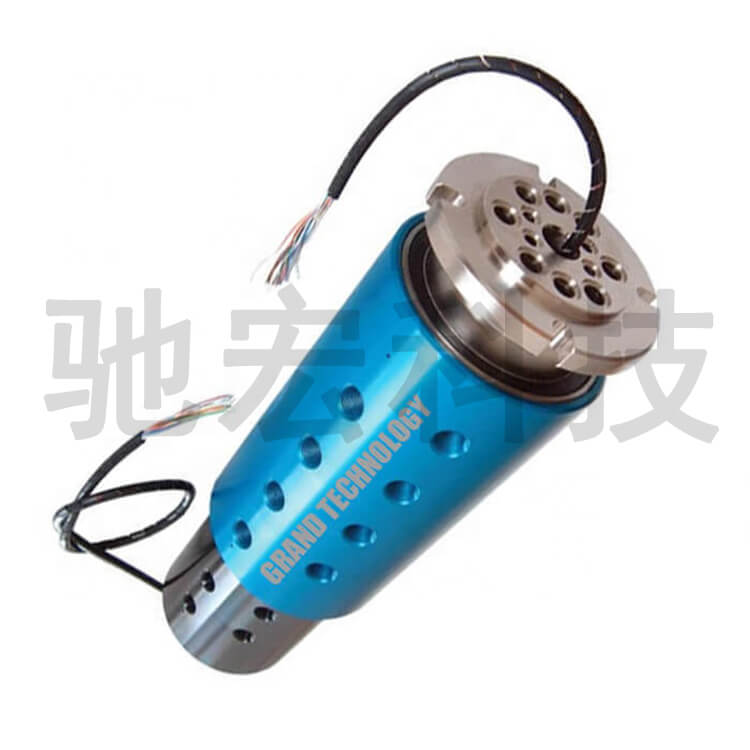Electrical engineering is a vast and complex field encompassing a multitude of components, devices, and technologies. Among these, induction motors serve as a crucial element in a wide range of applications, powering numerous machines and devices worldwide. The rotor—one of the primary internal components of an induction motor—plays a vital role in its function and efficiency. The squirrel cage and slip ring are the two main types of rotors used in induction motors, each one offering distinct advantages and limitations according to their unique properties.
Understanding the differences between the squirrel cage and slip ring rotors is essential for anyone involved in the design, selection, or operation of induction motors. This article aims to present a comprehensive comparison of these two types of rotors, examining their technical differences, applications, and pros and cons. With this knowledge, engineers, technicians, and other professionals can make well-informed decisions when selecting the appropriate induction motor for their specific needs.
In the following sections, we will delve deep into the world of induction motors, focusing specifically on squirrel cage and slip ring rotors. We will explore the principles behind their operation, consider real-world applications and case studies, and discuss the benefits and drawbacks of each type in various contexts. By the end of this article, you will have gained a thorough understanding of the squirrel cage and slip ring rotors and their respective roles in the realm of electrical engineering.
Slip Ring vs. Squirrel Cage: Profound Understanding
To comprehend the differences and unique features of both the Squirrel Cage and slip ring, it’s vital first to understand what each of them is, how they function, and what their typical applications are in the real world.
Squirrel Cage
The Squirrel Cage is a type of rotor used in induction motors. The name ‘squirrel cage’ is derived from its structure, which resembles a running wheel found in a rodent’s cage. It is constituted of a laminated iron core with evenly spaced bars of highly conductive material like copper or aluminum around its circumference. This ensemble is shorted at both ends through metallic rings, completing the ‘cage’ structure.
The operation of a squirrel cage is based on the principle of electromagnetic induction. When alternating current is supplied to the stator of the motor, it generates a rotating magnetic field. This rotating field induces a current in the conductive bars of the squirrel cage due to electromagnetic induction. The interaction of this induced current with the magnetic field generates a force that rotates the rotor and, consequently, drives the motor.
The simplicity of a Squirrel Cage’s design, coupled with its durability and efficiency, makes it a popular choice in many applications. These motors are commonly used in both residential and industrial settings such as home appliances, HVAC systems, and fans or pumps in industrial machinery.
Slip Ring
Contrary to the Squirrel Cage, the slip ring, also known as a wound rotor motor, comprises a set of wound coils on the rotor. These coils are connected to the external circuitry through carbon brushes which make and break connections as they touch and move away from the rotating rings, also known as slip rings.
The function of a slip ring rotor relies on the same principle of electromagnetic induction as the squirrel cage. The primary difference lies in its ability to adjust the motor’s performance by introducing additional resistance into the rotor’s circuit through the slip rings. This adjustment is particularly useful when a high starting torque is required.
The applications of slip ring motors are focused primarily in areas where high starting torque or speed control is necessary. This includes elevators, cranes, and certain types of pumps, where the slip ring’s feature allows the speed to be managed effectively. However, the complexity in design and higher maintenance needs make them less commonly utilized than Squirrel Cage motors.

Slip Ring vs. Squirrel Cage: Main Differences
The differences between the Squirrel Cage and Slip Ring become apparent when we compare them across various parameters such as structure, operation, durability, cost, maintenance, efficiency, and performance. Through a detailed look into these aspects, the unique attributes of each come to the fore. The following comparison elucidates these distinctions with clarity.
Structure: The Squirrel Cage has a straightforward, sturdy ‘cage-like’ structure made of aluminum or copper bars shorted at the ends by conducting rings. On the other hand, the Slip Ring motor possesses a more complex structure with a wound rotor connected to the external controls through rotating slip rings and carbon brushes.
Operation: Both motors operate on the principle of electromagnetic induction, where the rotating field of the stator induces a current in the rotor. However, the Slip Ring motor differs in its ability to alter the rotor resistance— and hence, the performance of the motor—via the brushes in contact with the slip rings.
Durability: Squirrel Cage motors tend to be more robust and durable as their solid structure is less prone to wear and tear over time. The Slip Ring motors, given their complex design involving rotating slip rings and contact brushes, are more susceptible to wear and require regular maintenance.
Cost: Due to their simplicity and less usage of materials, Squirrel Cage motors are generally less expensive than Slip Ring motors. The higher complexity, additional components, and the need for regular maintenance contribute to the overall cost of Slip Ring motors.
Maintenance: The Squirrel Cage motor, with its rugged construction and fewer wear-and-tear parts, requires relatively minimal maintenance. In contrast, the brushes and slip rings in Slip Ring motors need regular attention and replacement, increasing their maintenance demands.
Efficiency: Generally, Squirrel Cage motors have higher efficiency based on their simpler design and the absence of energy losses that can occur in the Slip Ring motor, primarily due to resistive losses in the rotor circuit and friction in the brushes.
Performance: Squirrel Cage motors are reliable for steady-speed operations where speed changes are infrequent. Slip Ring motors, while also effective for continuous operation, excel in scenarios needing high starting torque and adjustable speed.
For visual understanding, diagrams showing the internal structure of the two types of motors can be highly illustrative. A properly labeled comparison table will lay out the differences and similarities in a single glance and prove beneficial.
Through this detailed comparison, the unique attributes of each of these motor types become evident, demonstrating how structure, operation, cost, and other factors significantly contribute to their suitable applications.

Slip Ring vs. Squirrel Cage: Advantages of Squirrel Cage over Slip Ring
Although both the Squirrel Cage and Slip Ring have their unique merits and uses, some advantages make the Squirrel Cage a preferred choice under certain circumstances. Here, we delve into the major benefits that a Squirrel Cage design offers and analyze how it stands in comparison to the Slip Ring.
Simplicity of Design: One of the standout advantages of the Squirrel Cage rotor is its simplicity. The absence of brushes, slip rings, or any external connections to the rotor results in a simple and sturdy design. This unambiguous construction leaves little room for defects and offers high reliability. In contrast, the Slip Ring’s intricate design can make it more vulnerable to faults and complications over time.
Cost-Effectiveness: Typically, Squirrel Cage motors tend to be less expensive compared to Slip Ring motors. Their manufacturing process is more straightforward and requires less material, translating into lower production costs. This affordability is appealing, especially for applications that do not require the advanced speed control features that Slip Ring motors offer.
Efficiency and Performance: Squirrel Cage motors boast high efficiency and robust performance, especially for operations that demand consistent speed. There’s minimal power loss due to the absence of contact resistance from brushes, as seen in Slip Ring motors. This absence of energy losses makes them more efficient.
Lower Maintenance: Owing to their rugged, brushless design, Squirrel Cage motors require less maintenance compared to Slip Ring motors. The absence of brushes and slip rings means there are fewer components that wear out and need regular replacement.
Higher Durability: Given their solid, robust design and lower maintenance requirements, Squirrel Cage motors demonstrate higher durability over time.
In conclusion, the reliability, cost-effectiveness, high efficiency, and lower maintenance requirement of the Squirrel Cage make it a preferred choice in applications where high-speed control and high starting torque are not critical. However, this doesn’t imply these motors are superior in all situations. The choice still largely depends on the specific requirements of the application.
Slip Ring vs. Squirrel Cage: Advantages of Slip Ring over Squirrel Cage
While the Squirrel Cage motor is known for its robustness and simplicity, the Slip Ring motor, with its distinctive design, offers several advantages that lend it better applicability in certain specific scenarios. Let’s amplitude the benefits that a Slip Ring brings to the table and how it compares against the Squirrel Cage.
Adjustable Speed and Torque Control: The standout feature of the Slip Ring motor is its variable speed control and high starting torque. This is enabled by adjusting the resistance in the rotor circuit via the slip rings. Such a unique capability is absent in Squirrel Cage motors, making Slip Ring motors more suitable for applications where high starting torque and accurate speed control are pivotal.
Better Loading Capability: Due to their ability to handle higher starting loads with lesser starting currents, Slip Ring motors can deal with heavy machinery loads more effectively compared to their Squirrel Cage counterparts. This becomes a decisive factor in their usage in heavy industries.
More Flexibility and Versatility: With adjustable speed controls and the capacity to handle different load types, Slip Ring motors provide a degree of flexibility that is advantageous when variable speed and torque are required. This flexibility makes them highly suitable for applications like hoists and elevators, where load varies and precise control is necessary.
Less Mechanic Stress on the Motor Start: Slip Ring motors, due to their higher starting torque and lower starting currents, tend to impose less mechanical stress on the motors during the starting phase. In applications such as elevators or cranes, this property is beneficial in preserving the motor’s lifespan.
Less Current Demand at Startup: Unlike Squirrel Cage motors, Slip Ring motors draw less current from the power supply during the starting phase due to the external resistance provided through slip rings. This feature is essential in scenarios where the power supply struggles with a high inductive current.
In a nutshell, though Squirrel Cage motors are widely preferred for their simplicity and robustness, the unique advantages offered by Slip Ring motors–like adjustable speed control, high starting torque, and low inrush current–prove pivotal in meeting certain application-specific requirements. Therefore, the choice between Squirrel Cage and Slip Ring motors largely depends on the intended use and the operational conditions.
Slip Ring vs. Squirrel Cage: Case Studies
To better understand the practical implications and advantages of Squirrel Cage and Slip Ring motors, it’s helpful to examine real-world case studies that demonstrate their suitability in diverse operational scenarios. We will explore one case study for each motor, showcasing their optimal performance and advantages in specific applications.
Case Study – Squirrel Cage Motor in an HVAC System
Scenario: A large commercial building’s central heating, ventilation, and air conditioning (HVAC) system requires a new motor to drive the fans, ensuring consistent air circulation throughout the building.
Solution: In this instance, a Squirrel Cage induction motor is an optimal choice. HVAC fan systems typically require constant-speed operation and the ability to manage air pressure variations efficiently. The Squirrel Cage motor’s simplicity, low cost, high efficiency, reliable performance, and low maintenance requirements make it an ideal fit for this application.
Outcome: By installing a Squirrel Cage induction motor in the HVAC system, the building management benefits from reduced energy consumption, longer motor lifespan, and minimal maintenance. This ensures optimal performance and cost savings in the long term.
Case Study – Slip Ring Motor in an Elevator System
Scenario: A skyscraper’s elevator system requires an upgrade to ensure safe and efficient passenger transport. The new motor should be capable of handling varying loads, maintaining precise speed control, and offering high starting torque.
Solution: The Slip Ring motor’s features make it an appropriate candidate for such an application. Its ability to provide high starting torque and adjustable speed control ensures a smooth and secure ride for passengers. Additionally, the motor’s reduced current draw at startup results in fewer demands on the building’s electrical system.
Outcome: When the Slip Ring motor is integrated into the elevator system, the building occupants experience a smooth and safe movement between floors. The improved performance, versatility, and long-term reliability of the motor make it a valuable investment for a safe and efficient passenger transport system.
By exploring these case studies, it becomes clear how Squirrel Cage and Slip Ring motors present distinct advantages in different operational scenarios. The HVAC example showcases the reliability, efficiency, and low maintenance qualities of the Squirrel Cage motor, while the elevator scenario highlights the flexible speed control and high starting torque offered by the Slip Ring motor.
Conclusion
The decision between squirrel cage and slip ring is usually application-driven. Squirrel cage motors, with their robust performance and lower maintenance, fit into a broad spectrum of applications. On the other hand, slip rings, with their advanced control features, cater to applications requiring high starting torque and speed controls. Choose wisely considering your needs, and both could serve you impressively in their capacities.
Based on this comprehensive comparison, we hope you’ve gained valuable insights into the mechanics, applications, and differences between Squirrel Cage and Slip Rings.
Faqs About the Difference Between Squirrel Cage and Slip Ring
Engaging with users’ curiosity, several essential questions tend to surface regarding Squirrel Cage and Slip Ring motors. These often revolve around the efficiency, durability, and common applications of each. Here we address several such commonly asked questions in an attempt to clear any ambiguities that users might have about these motors.
Q1: Which is more efficient, Squirrel Cage or Slip Ring?
A1: Generally speaking, Squirrel Cage motors are more energy-efficient. This is because of their simple and straightforward design that flatly eliminates any chance of frictional loss or energy loss due to contact resistance that can take place in Slip Ring motors owing to the presence of brushes.
Q2: Which motor is more durable, the Squirrel Cage or the Slip Ring?
A2: The Squirrel Cage motors, given their rugged construction and absence of brushes or slip rings, tend to hold up better against wear and tear. Thus, in terms of durability, Squirrel Cage motors generally have a longer lifespan compared to Slip Ring motors.
Q3: In which applications is Squirrel Cage preferred?
A3: Due to their high efficiency, reliability, and low maintenance, Squirrel Cage motors are typically used in applications that require constant speed and do not demand high starting torque. These include HVAC systems, pump systems, and general-purpose applications in domestic and industrial sectors.
Q4: In which applications is Slip Ring preferred?
A4: The high starting torque and speed control of the Slip Ring motors make them suitable for applications demanding high load variation and precise speed control. Real-world examples include heavy machinery, hoists, elevators, and industries where frequently changing operations are required.
Q5: Can a Squirrel Cage motor be converted to a Slip Ring motor or vice versa?
A5: No. The two types of motors have vastly dissimilar designs that revolve around the construction of their respective rotors. Attempting to convert one into another would involve substantial mechanical rework, which is impractical and highly unadvisable.
See What We Can Do

